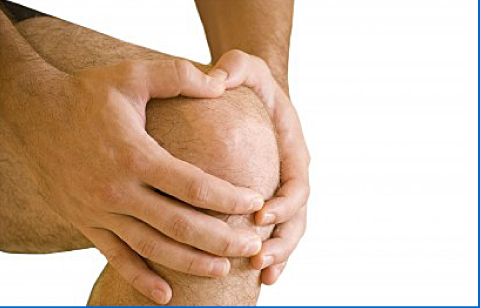Patellar (Knee cap) problems
Patella (knee cap) is a disc-like bone embedded within the quadriceps tendon in the front of the knee joint. It acts like a pulley, by directing the muscle to straighten (extend) the knee. Therefore, the patella articulates with the lower end of the femur (thigh bone) within the knee joint. This articulation plays a very important part in the overall movement, strength and stability of the knee joint. Any injury or disease damaging any part of this articulation may cause an appreciable symptoms and complaints to the patient.
Some of the problems affecting the patella (knee cap) and their treatment are summarised below:
1. Patellar fracture
This is an acute injury. It is usually caused by a forceful direct blow to the knee, such as falling on the knee or a direct hit from an opponent during sport. Like any fracture, it is a medical emergency and needs urgent visit to the local hospital. Some of these fractures are simple a crack in the bone which can be treated in a plaster for a few weeks, followed by a course of physiotherapy. Some others are more severe and complex which necessitate a surgical fixation of the bone using pins and wire. Hence the need for urgent diagnosis and treatment.
2. Patellar Dislocation
This is another acute injury of the knee. It is common among some sports like football and Rugby. The patient usually has suffered a direct impact on his/her patella. He/she then describes that the “kneecap moved out and had to be pushed back into place”. In the rare occasion the knee cap stays out of place till be seen by the specialist. This is another medical emergency and needs to be treated in the nearest Accident & Emergency unit. Back...
3. Patellar Instability
The patella articulates with the femur (described above) and runs by a groove in it. The patella is stabilised in this groove by complex and balanced attachments of tendons and ligaments. The common scenario behind “Patellar Instability” is that the knee of the patient has been subjected to a trauma and suffered from a previous episode of patellar dislocation. This has caused an injury to any of these ligaments around the knee cap. The balance therefore has been lost and the patient has continued experiencing recurrent dislocation of the patella afterward.
The diagnosis is usually made by the expert using special clinical test as well as some other imaging tests (X-ray, CT scan, MRI scan). The initial treatment for the early stage of the problem has been mostly a non-operative method. This involves a special physiotherapy programme and rehabilitation for the patella with or without the aid of specific knee/patellar braces. The aim of this treatment is regain the balance around the patella which was lost following the initial injury. If the knee cap re-dislocates in spite of the above treatment, surgery may be required to stabilise the patella.
4. Patellar Arthritis
The articulating surface of the patella with the femur (thigh bone) is covered with thick cartilage. Therefore, this cartilage is subject to injury as well as Arthritis. There are some evidences supporting that an un-treated traumatic Patellar Instability may lead to patellar arthritis.
The onset could be sudden after an acute trauma, or gradual following the course of slow process of degeneration (Wear & Tear). The common complaints are pain in the front of the knee, swelling, giving way, clicking and catching. They are often aggravated by squatting, kneeling, going down stairs and jumping.
The diagnosis here is not straight forward. Imaging tests (X-ray, MRI scan) may cast more lights on the possible causes of this condition. Knee arthroscopy has almost always indicated to check the patella from within the knee joint. Back...
Treatment
Non-operative treatments involve pain killers, anti-inflammatory medications, and sometimes knee injection in an attempt to control the pain. Also, patellar bracing and physiotherapy is usually prescribed in order to eliminate any aggravating factors like patellar instability.
If they all failed, then operative treatment would be considered with the patient.
Some of these surgical options are;
1. Arthroscopic Debridement Chondroplasty
2. Arthroscopic Microfracture Chondroplasty
3. Arthroscopic Lateral Release:
This is a keyhole surgery and can be done as a Day Surgery. The first part of it is to assess the whole knee from within as well as to check the patella in motion using the telescope. In some patients, this motion test may reveal that the patella is running in an un-balanced fashion and out of alignment. One common reason for it is that fibrous bands (retiniculum) attached to the outside part of the patella, are too tight and pull it out of position. In this situation, the second part of the same operation is to cut this overly tight structure from within the knee joint by using a special arthroscopic electrical blade. This cut allows the patella to move back into its normal running position. It is worth to mention that this operation is successful in around three quarters of the patients and full consultation with Mr. Ayoub is warranted beforehand. Back... |



